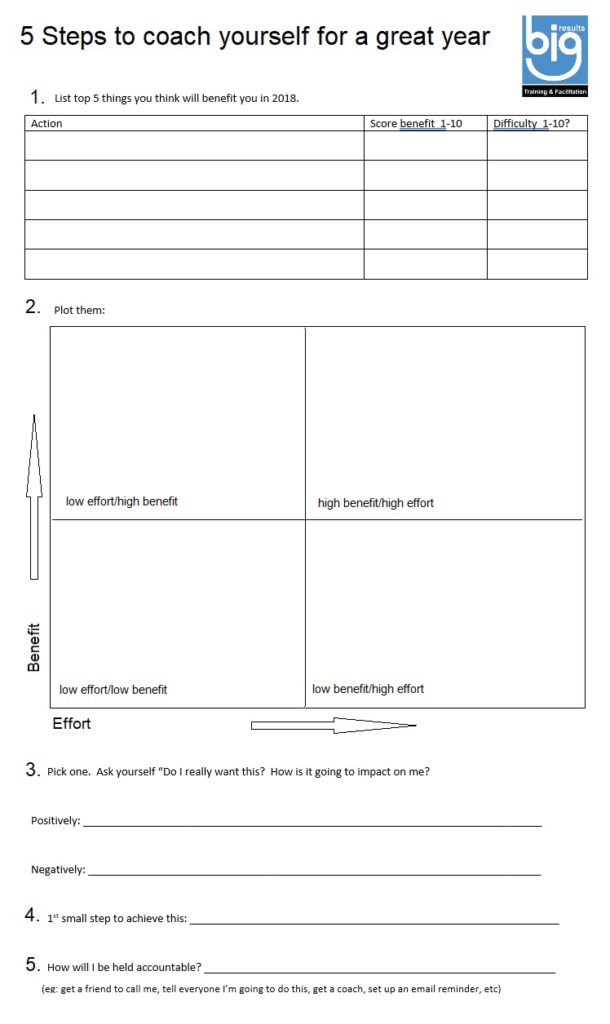
Welcome to the start of 2018. Like most people you’ve probably been enjoying some thinking time over the Christmas holidays – which inevitably results in reflecting on all the possibilities that a new year offers. So we thought we’d give you a neat coaching format to help you coach yourself to a great year!
The “Coach yourself to a great year” form is downloadable, so grab yourself a copy. And simply follow the instructions.
Enjoy this little self-coaching activity. Please let us know how you get on with it at our Facebook page, or email us on our Contact page:

Coach yourself to a great year
You can also download the PDF here: 5 steps to coach yourself to a great year
Coach yourself to a great year – FAQ’s
Should I always go for the “high benefit, low effort” quadrant?
The reason this format is given, is so that you can assess what you want to go for, and see at a glance what effort and energy you need to apply to something. If you feel ready to apply a lot of energy/effort, and can see the benefits of a super-high benefits activity, then go for it! If, on the other hand, you already feel depleted, then why on earth put more energy into something where the benefits do not apply? Perhaps start off with the activity that demands the lowest effort possible. A start on something (however small) is better than doing nothing about everything.
Why look for the negatives?
You’ll notice on the form, there’s a question that asks you: “how will this affect you negatively”? Why on earth did we ask that? I mean surely coaching is all about the positives….
Coaching is often misunderstood. At its heart it is about supporting a client by using tools and techniques, and a lot of clever questioning, so that the client achieves what they want. As part of the “clever questioning” a coach may check in with what the client does not want. This is important because whilst it may look like we’ve been procrastinating about something, actually there may be hidden negatives in achieving something. For example: A gentleman who said he wanted to lose weight, but then realised that if he did lose weight he would have to get rid of all his expensive suits.
As you can imagine, it’s worth checking out the negatives. In this situation, he realised that he could get most of the suits altered, and suddenly this stopped being a blocker for him.
Only 5 things?
For this form, yes. But you can add as many as you want. The key thing is to decide on just one of them – and to put the effort/energy into achieving it.
Find out more about Big Results Coaching here: COACHING


